
The "Prado Museum Exhibition Velázquez and Glory of Painting" is held at the National Museum of Western Art, from Saturday, February 24th to Sunday May 27th, 2018. Since the exhibition was held on February 23, I will tell you the situation.
The Prado Museum in Madrid is the world's most beautiful hall of fame, opened in 1819 with the Spanish royal collections as its core. In this exhibition, about 70 works including 61 works including masterpieces of 17th century paintings are on exhibition, centering on seven works of Diego Velázquez (1599-1660), one of the greatest painter in the history of Western art.
Spain in the 17th century produced large painters including Velázquez, Rivera, Sul Balan, Murillo etc. As a background for this, all the past Spanish kings loved and gathered paintings. The court gathered foreign works such as Italy and France, as well as works not seen in general such as nude paintings. The court painter Velázquez who was under the protection of the King Felipe IV is also strongly inspired by the court collection. This exhibition is an opportunity to not only view Velázquez works but also to touch the art scene in the Court of Madrid in the 17th century.

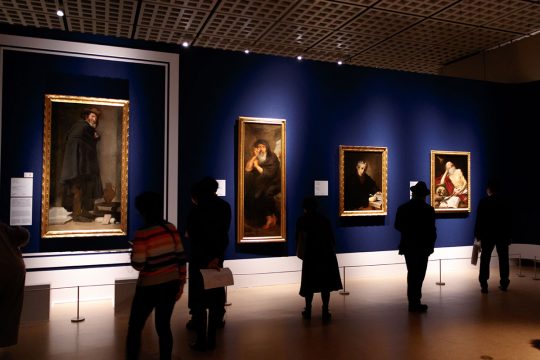
Mythical picture of "Secret Room"
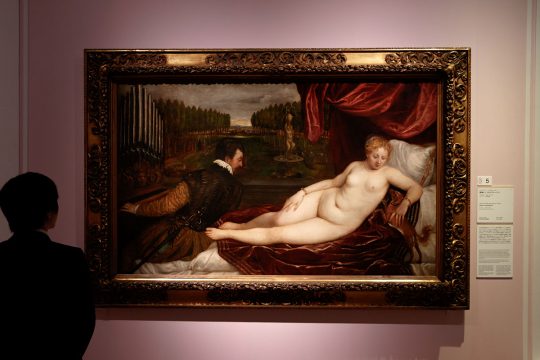
Tiziano Vecellio "Venus relaxing in music" around 1550 Madrid, the Prado Museum of Fine Arts
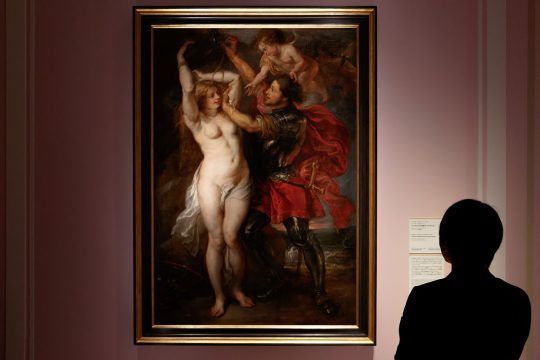
Peter-Paul Rubens, Jacob Jordaens "Perseus to Save Andromeda" 1639 – 41 Madrid, collection of the Prado Museum of Art
The Spanish painter did not do much myth painting. Nonetheless, mythical paintings appear at a very high rate in the collection catalog of Spanish royalty aristocrats. Spain was procuring works from other European painting production sites.
One of the reasons the Spanish painters did not handle the myths so much is that drawing myths is directly linked to the depiction of the naked body. For painters naked is an opportunity to best show the height of their abilities, but it was also a dangerous area linked to obscenity from a moral point of view. As a result, in Spain, especially after the 1630's, drawing fancy paintings and decorating nude paintings in public places became felonies.
However, in the royal family, nudity images were gathered in a space restricted access such as called "secret room". The mythical paintings of the royal collection often carried not only beauty and sensuality but also moral, secular and political implications. Mythical expression is because it was one of the most frequently used means of talking about power.

Belongs to Vicente · Cardocho "Huge Male Head" In about 1634 Madrid, the Prado Museum of Fine Arts
It is pointed out that the "gigantic male head" that was decorated in the place called "Queen's private room" of the Buen-Retiro palace is a depiction of the head of the giant. This eccentric gazing eye-gazing eyes may have been hung as a gatekeeper for "queen's private room".
Portrait to show off power

In the era of Felipe IV, genres such as portraits were generally inferior to narrative paintings. However, the routine work of court painters was the production of portraits. It was because it had an important role to show off power to both inside and outside. Velázquez also has its main work portrait, which is estimated to be more than 80 percent of the whole work.

Diego Velázquez "Felipe IV in the hunting clothes figure" 1632 – 34 Madrid, the Prado Museum of Fine Arts
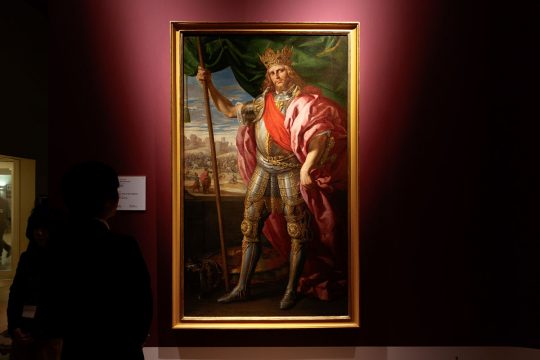
Felix Castello "Theodoric King of the West Goat" 1635 Madrid, collection of the Prado Museum of Art
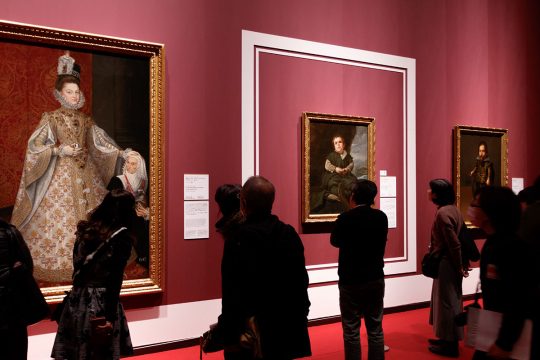
A landscape painting brought from a foreign country
Landscape painting was a genre comparatively estranged for Spanish painters of the 17th century, like landscape paintings, but landscape paintings were frequent in the collection of the 17th century Spanish royal aristocracy. Most of the landscape paintings were produced by painters who are not Spanish and were imported from outside the Iberian peninsula.
In addition, Velázquez was inspired by touching the landscape painting production in Rome during the first Italian trip (1629 – 31). After that, in the background of several portraits produced in the 1630s, the mountain ranges based on the Guadarrama Mountain Range in the northwestern suburb of Madrid are drawn in a distant view.
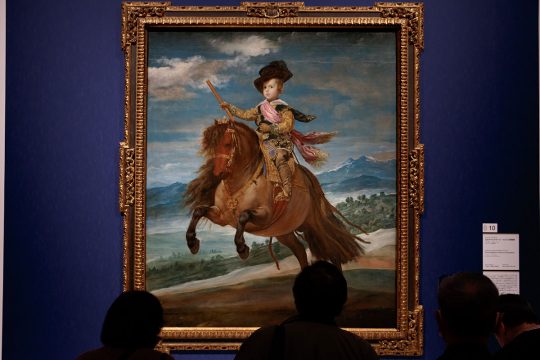
Diego Velázquez "Ottoman Baltasar · Carlos horse statue statue" around 1635 Madrid, the Prado Museum of Fine Arts

Salvator Rosa "Seascape" 1638 – 39 Madrid, the Prado Museum of Fine Arts
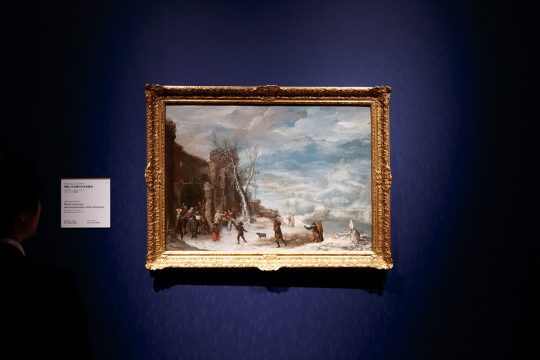
Francisco Coryanses "Winter scenery with worship of the shepherd" 1630 – 50 Madrid, collection of the Prado Museum of Art
The scene of the traditional "shepherd worship" that is talked about in the New Testament is depicted in Francisco Coryanses "The winter scenery with shepherd's worship". It is a rare snow scene in the 17th century Spanish painting history. The composition that draws a scenic figure as foreground in front of the screen and draws a panoramic landscape extending diagonally from the upper right is similar to the work of Pieter Bruegel the (father).
Religious painting that attracts holy existence close to us
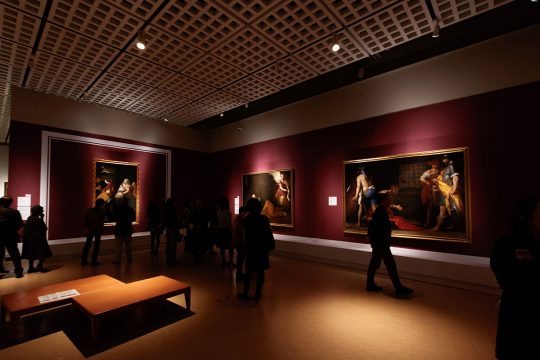
The 17th century was an era when the essence of religious art was thoroughly described as "representing sacred existence as if it existed before our eyes". There was an innovative trend such as contrast between light and shadow used by Italian painter Caravaggio and sense of rich color by Carracci families who were active in Bologna. It was Flemish painter Peter Paul Rubens who absorbed these various styles and eventually created a dynamic and colorful style.

Juan · Bautista · Mino "Pentecost" 1615 – 20 Madrid, collection of the Prado Museum
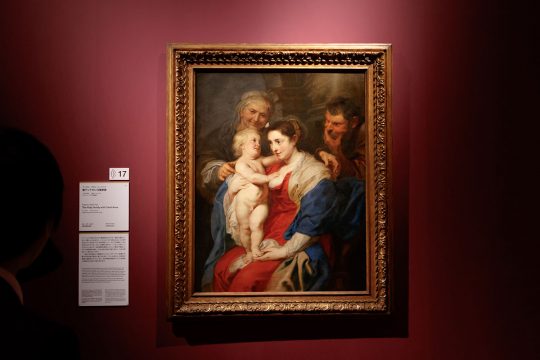
Paeter · Paul · Rubens "Holy Family with St. Anna" Madrid in about 1630, Collection of the Prado Museum of Art
In this way, this exhibition has the name of Prado Museum and Velázquez, but it is not just a Spanish art exhibition or Velázquez exhibition. It is an exhibition with international paintings of the 17th century lined up, which was gathered because it is the Court of Madrid. Why do not you visit the art scene of the 17th century by all means?
Summary
| Exhibition name | Japan Spain 150th Anniversary of Diplomatic Relations Established Prado Museum Exhibition Velázquez and the glory of paintings |
A session
Saturday, February 24, 2018 – May 27 (Sun)
Venue National Museum of Western Art Tokyo Ueno Park 7-7, Taito-ku, Tokyo Wednesday Monday ※ March 26 (Mon), April 30 (Monday) Open Hours 9:30 am – 5:30 pm
(Friday, Saturday until 8 PM)
※ Admission until 30 minutes before closing
Viewing fee 1,600 yen (1,400 yen), college students 1,200 yen (1,000 yen), high school students 800 yen (600 yen)
※ Group fee in parenthesis. Group rates are 20 people or more.
※ Junior high school students and below are free. URL
http://prado2018.yomiuri.co.jp
Touring Exhibition From Wednesday, June 13, 2018 to Sunday, October 14,
Hyogo Prefectural Art Museum
The press conference report is here:
https://home.ueno.kokosil.net/en/archives/18393


